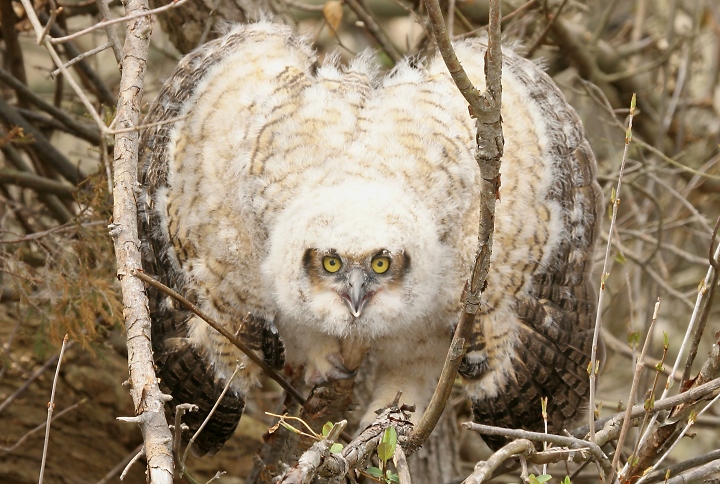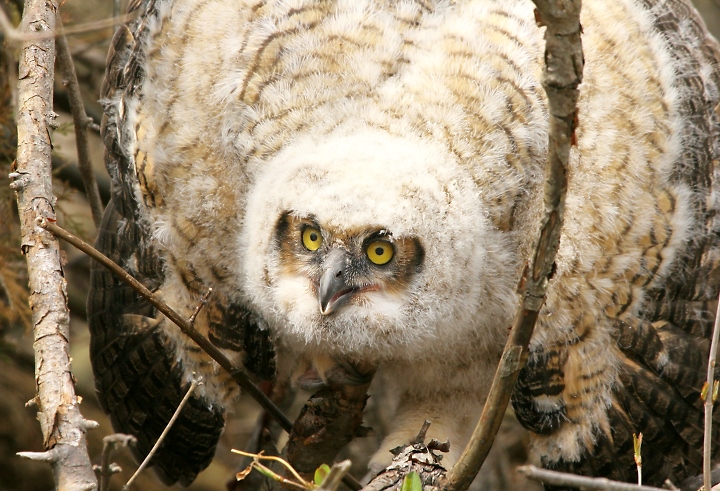Great Horned Owl (Bubo virginianus)


Above: We found this fledged Great Horned Owl near a pine-lined marshy area near Little Creek, Delaware, and were blown away by its behavior. It held up its wings like a Sunbittern to look larger and was constantly clicking its bill. Quite an impressive sight for a young owl! There are not many predators around here to challenge such an intimidating prospect. We never left the car and only disturbed it for a minute or so as we snapped a few dozen images. Really fantastic bird, and an awesome behavior I'd never even heard of among owls. We saw one of its parents fly by while there, so we were confident it was not in any immediate trouble - probably just well-timed with one of its first attempts at flight.
Listen to audio (Somerset Co., Maryland, 9/26/2009)
Below: Two recently fledged Great Horned Owls on Assateague Island, Maryland (5/14/2011).

Below two an exception to policy: Photographed at the bird rehabilitation aviary at Rocky Gap S.P.,
Allegany Co., Maryland (Sep 2005). I like these photos too much to not include them.


Below: We spotted this adorable fledged Great Horned Owl after one of its parents silently flew off nearby (wash near Big Bear, California, 7/29/2006).

Comments: The Great Horned Owl is the most widespread owl in North America, and probably the most powerful hunter. The Great Gray Owl is larger, but the Great Horned is heavier and more frequently takes large prey. The Great Horned Owl regularly attacks animals larger than itself, including cats, porcupines, and herons. I really like this summary from The Owl Pages,
"An extremely wide range of prey species (at least 253 identified) are captured, but rabbits and hares are its preferred prey. Mammalian prey
includes all coexisting rodents, squirrels, mink, skunks, raccoons, armadillos, porcupines, domestic cats and dogs, shrews, moles, muskrats,
and bats. Bird prey includes all other Owls (except Snowy Owl), grouse, woodpeckers, crows, turkeys, pigeons, Red-tailed Hawks, bitterns,
Great Blue Heron, ducks, swans, gulls, etc. Reptiles include snakes, turtles, lizards, and young alligators. Amphibians include frogs,
toads, and salamanders. Other foods include fish, large insects, scorpions, centipedes, crayfish, worms, spiders, and road killed animals."
We are talking about a truly powerful predator! It is a member of the genus Bubo, the Eagle Owls, which are the largest owls in the world. Eagle owls are found everywhere except on Australia, the southwest Pacific islands, and Antarctica, ranging from tundras and deserts to the jungles of equatorial Africa.
